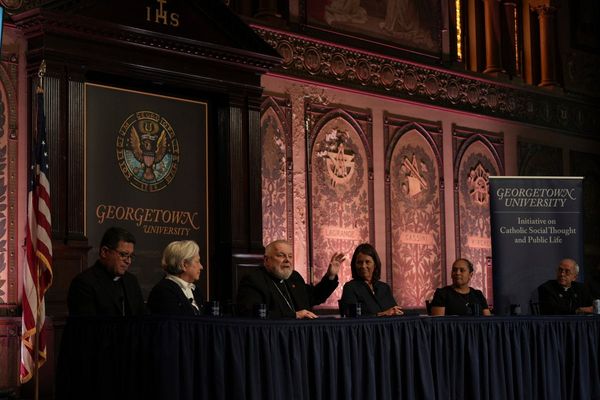
Social media turned ordinary people with ring lights and confidence into financial celebrities overnight. Suddenly, self-proclaimed finance gurus began shaping how millions think about debt, credit, and budgeting.
With catchy phrases and quick tips, they position themselves as trusted advisors in a world where attention spans are short. Their biggest trick? Making complex financial tools sound like harmless life hacks. And one of the most hyped tools in their arsenal is Buy Now, Pay Later.
Why BNPL Sounds So Tempting Online
Influencers present BNPL as a sleek alternative to credit cards, dressed up with the promise of zero interest and instant gratification. They showcase luxury sneakers, high-end makeup, or the latest tech gadget, saying BNPL makes them “totally affordable.” This creates the illusion of responsible spending when it’s really just delayed debt. The marketing often highlights ease and accessibility, skipping over the risks of missed payments and spiraling balances. Wrapped in influencer-approved packaging, BNPL feels more like a lifestyle upgrade than a financial product.
The Psychology of Influence at Play
Finance influencers lean on trust, relatability, and aspirational lifestyles to make BNPL seem safe. By saying “I use it all the time,” they erase the line between endorsement and financial advice. Viewers see someone who looks approachable, not a corporation trying to push credit.
This emotional connection makes followers more likely to sign up without digging into fine print. In reality, that trust fuels a dangerous cycle of overspending masked as empowerment.
The “No Interest” Illusion
One of the boldest selling points influencers hype is the idea that BNPL is interest-free. While technically true for on-time payments, it hides the reality of late fees, debt collection, and credit report damage. Gurus often gloss over these risks because it ruins the narrative of “free money.” The focus stays on flexibility and convenience, not accountability. What sounds like a harmless payment plan can quietly become a trap.
How Algorithms Amplify the Message
Platforms reward content that’s flashy, positive, and easy to consume. That means influencers talking about financial responsibility often get buried while BNPL promotion thrives. Clips showing “haul now, pay later” rack up views faster than sober advice about budgeting. Algorithms then push these videos to wider audiences, reinforcing the cycle of hype. The louder the chorus of BNPL cheerleaders, the harder it becomes to hear cautionary voices.
Why the “Guru” Title Doesn’t Equal Expertise
Many influencers wear the guru badge but lack any real financial training or credentials. Their expertise often comes from personal anecdotes, not professional qualifications. While relatable, this leads to dangerously oversimplified advice. The same people promoting trendy coffee brands or skincare routines are now shaping financial decisions. The crossover blurs the line between authentic guidance and paid promotion.

The Hidden Business Behind the Endorsements
BNPL companies are well aware of influencer power and partner aggressively with them. Many gurus don’t just casually recommend BNPL—they’re compensated to endorse it. This creates a conflict of interest that most viewers don’t recognize. Instead of flagging it as advertising, the pitch comes across as friendly advice. Behind the curtain, influencers are marketing teams in disguise.
The Debt Spiral No One Talks About
BNPL encourages stacking multiple purchases across different platforms without fully realizing the combined debt. Missing payments quickly snowballs, leading to fees, damaged credit, and even collections. Gurus rarely discuss these long-term consequences because they kill the aspirational vibe. Instead, followers are left with a distorted picture of financial freedom. What begins as “manageable payments” often ends with overwhelming obligations.
Younger Audiences Are the Prime Targets
BNPL is particularly seductive to Gen Z and younger millennials. These groups already face rising living costs, student debt, and limited credit options. Finance influencers pitch BNPL as a way to live large without traditional barriers. The appeal of instant gratification overshadows the burden of repayment. Companies know this and lean heavily on influencer partnerships to reach impressionable audiences.
The Shiny Lifestyle Trap
Scroll through Instagram or TikTok, and BNPL is often presented alongside designer bags, lavish vacations, and curated aesthetics. The message is subtle: you deserve luxury, and BNPL makes it possible. This fuels aspirational consumerism where the lifestyle matters more than financial stability. Influencers blur the reality of repayment with glamorous content. For followers, financial caution gets drowned out by glossy highlight reels.
The Myth of Control
Influencers insist that BNPL puts power back in the hands of the consumer. The pitch is that breaking payments into smaller chunks means smarter spending. But that sense of control is largely an illusion, built on the psychology of minimizing guilt. Smaller payments make it easy to underestimate the real cost of consumption. The supposed empowerment often leads to overspending instead of independence.
Regulation Can’t Keep Up
Governments and regulators are only beginning to catch up to BNPL’s explosive growth. Influencers, however, move faster than laws and oversight. That leaves consumers exposed to half-truths and unchecked promotion. While agencies debate new rules, the digital world pumps out more glossy BNPL content daily. The lack of timely regulation creates a gap where misinformation thrives.
A Financial Culture Shift in Disguise
BNPL isn’t just a payment method—it’s shaping cultural norms around debt and instant gratification. Finance influencers frame it as forward-thinking, modern, and even rebellious against “old” credit systems. This reframing turns debt into a fashion statement rather than a financial burden. The danger lies in how normalized it becomes to carry multiple short-term debts casually. Influencers are not just selling BNPL; they’re reshaping how society views money itself.
The Bottom Line on BNPL Hype
Finance influencers make BNPL look like the easiest way to balance affordability and lifestyle. The reality is far less glamorous, filled with hidden fees, damaged credit, and mounting debt. Influencers benefit from portraying BNPL as harmless while viewers take on the risk. The game is stacked, and followers often don’t realize it until it’s too late. BNPL is less of a financial tool and more of a marketing masterclass in disguise.
Don’t Buy the BNPL Hype
Influencer-backed BNPL content is designed to be shiny, fast, and persuasive, but it skips the messy truth about debt. While BNPL can be useful in rare, responsible cases, it’s often a financial risk wrapped in lifestyle branding. Before clicking “pay later,” it’s worth asking: is this a need or just influencer-inspired pressure? Awareness is the best defense against trendy financial traps.
What’s your take on BNPL hype—do you see it as smart flexibility or a recipe for regret? Share your thoughts below.
You May Also Like…
10 Financial Gurus Whose Advice Is Now Considered Harmful
8 Career Advice Experts Wish They Could Take Back
6 Personal Finance Gurus Who Quietly Lost Everything
The post How Influencer “Finance Gurus” Misleadingly Promote BNPL appeared first on Everybody Loves Your Money.







